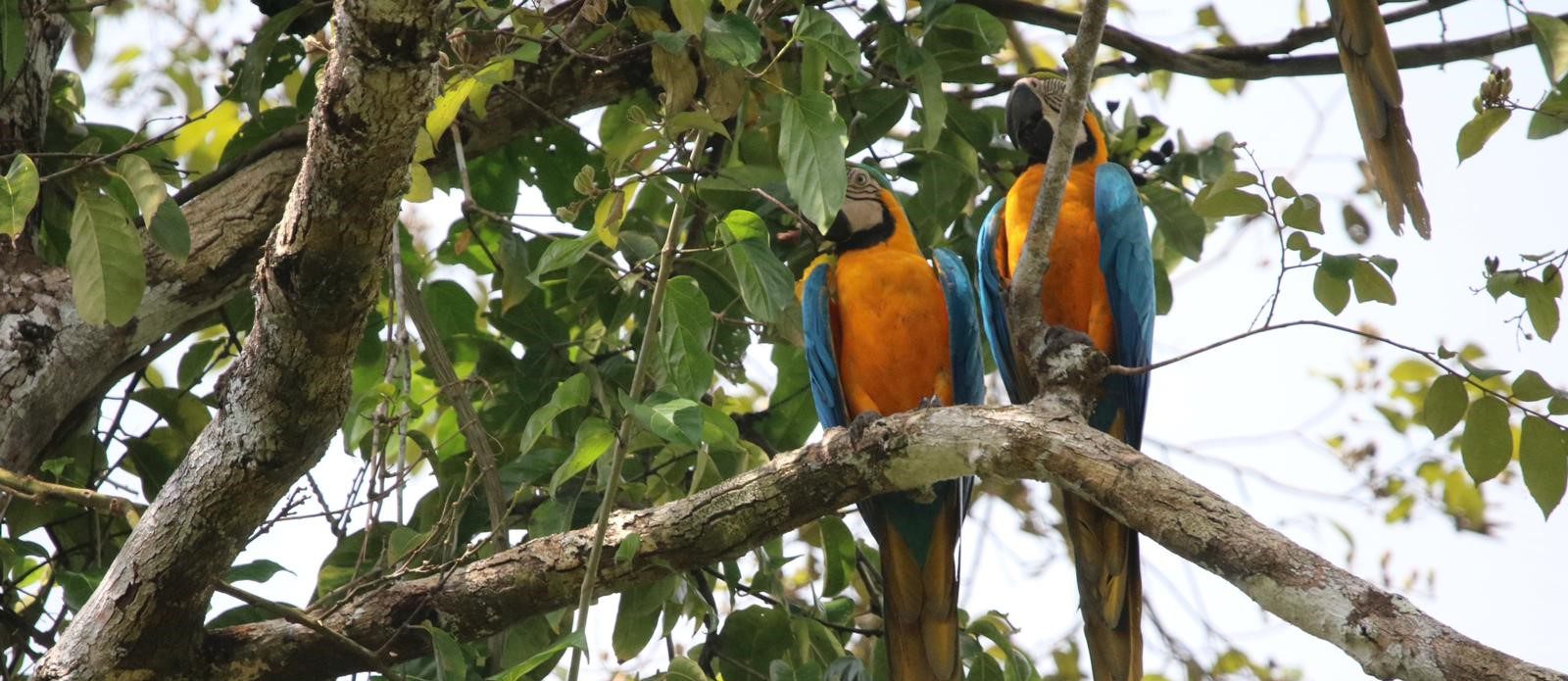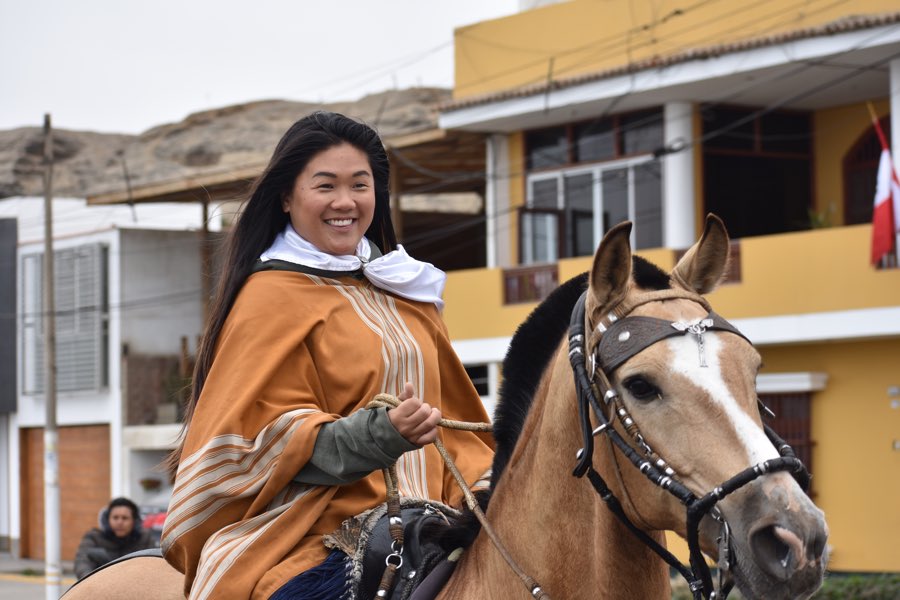Pacaya Samiria is a natural reserve that covers a large part of the Peruvian Amazon. There are several ways to explore it. I chose to enter the Pacaya Samiria reserve through Yurimaguas, a few hours from Tarapoto.
Some information about the natural reserve
The Pacaya Samiria National Reserve is one of Peru’s largest and most important protected areas. It is located in the Loreto region of the Amazon, approximately 183 kilometers southeast of the city of Yurimaguas.
The reserve covers an area of 2,080,000 hectares and was established on February 25, 1972. Today, it is a popular destination for nature lovers, ornithologists, adventurers, and scientific researchers due to its exceptional biodiversity and unique ecosystem. The reserve can be visited either through Iquitos, Nauta, or through Tarapoto, Yurimaguas, and Lagunas (more detailed information on how to get there is provided below).
Managing the Pacaya Samiria reserve is complex. There is the SERNANP (National Service of Natural Protected Areas) responsible for the reserve and managing entry permits. Several tourist operators, including a private one, offer stays within the reserve.
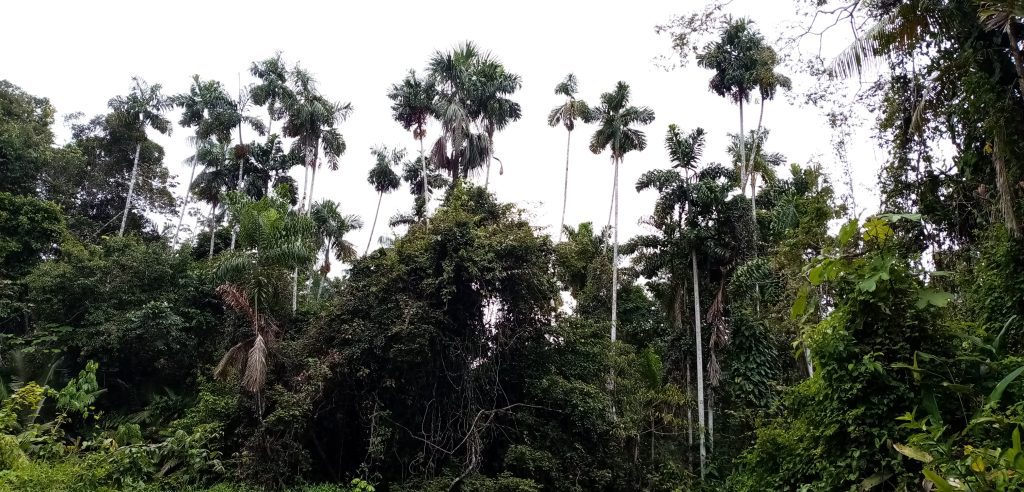
Biodiversity in Pacaya Samiria
Pacaya Samiria is home to abundant wildlife and flora.
Inside the reserve, there are lakes, swamps, and water holes where more than 130 types of mammals (different types of monkeys, pumas, tapirs, rodents, bats, sloths, gray and pink dolphins, and manatees) take refuge. It is also a paradise for birds with over 400 bird species (including blue macaws, hawks, kingfishers) documented. You will find more than 250 species of fish (such as paiches that can reach over 2 meters, piranhas, or tiger fish). There are also many reptiles and amphibians, such as boas or black caimans, lizards, frogs, and river turtles. During your stay, you will also see a multitude of insects, butterflies, dragonflies, stick insects, or ants.
In terms of plants, you have the famous ‘walking tree,’ which is also found in the Tingana reserve, aguaje trees (a palm known for its highly nutritious interior), and other palm species, bromeliads and heliconias, rubber trees, fig trees, and many others.
The Pacaya Samiria Experience
I am traveling with the Wonder Amazon operator, and Jorge picks me up in a converted van upon my arrival in Lagunas. The journey from Lagunas to the Wonder Amazon lodge takes 30 minutes. Lagunas is a small town where I realize that groceries are expensive, which can be explained by the fact that almost everything is imported – at least from Yurimaguas, if not further.
The Wonder Amazon lodge is located outside the town, 50 meters from the SERNANP office where you need to get entry permits. Jorge, the owner, has just finished setting up a fourth room. Each room has two beds and a private bathroom. Mosquito nets are installed on the windows and high up, as the rooms are open to the roof. The setup is quite ingenious; I didn’t have any mosquitoes in my room!
The lodge also has a dining room (huge), a kitchen, a future interpretation center, and a place to charge cameras or mobile phones. Internet connection is very limited; you’ll have to do without it for a few days (of course, there’s no internet connection in the reserve).
After dinner, which was too hearty for me, as is often the case, everyone rests to be ready for an early start the next morning.
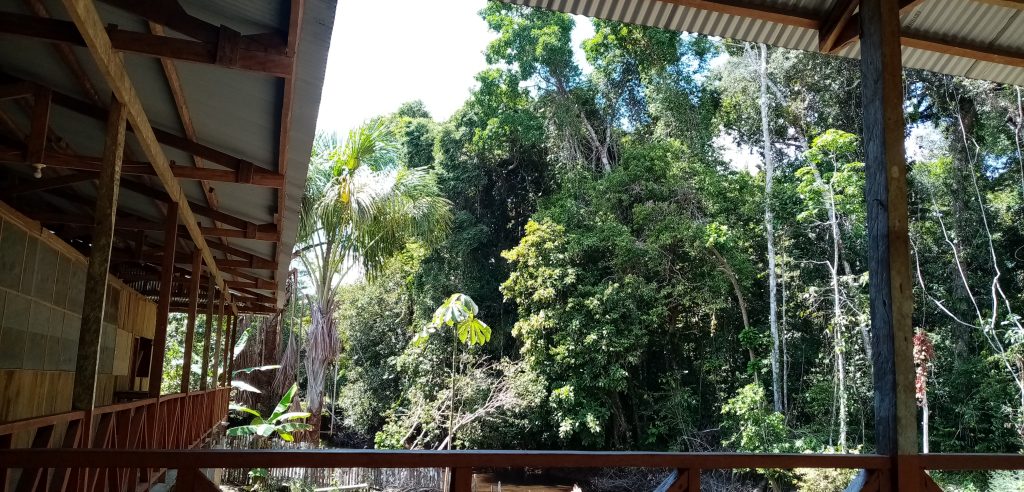
How Does a Trip in the Reserve Pacaya Samiria Work?
Depending on the trip you’ve chosen, you’ll spend 3 to 12 days inside the reserve. It’s evident that the longer you stay, the deeper you can venture into the reserve, and the more chances you have to see animals in the wild, especially the famous pink dolphins!
There are also themed outings, such as bird-watching tours, artisanal fishing tours, or plant tours. I’m going for a 4-day/3-night tour, which means I’ll be sleeping in two different places.
My Experience on Site : Day 1 from Lagunas to Gloria
Miguel, my guide, has already prepared everything the day before. After breakfast, we head out directly. He has loaded the canoe with everything we’ll need for the next 4 days: sheets, mosquito nets, a tent, toilet paper, bottled water for drinking, water in containers for washing, ingredients for cooking, fruits and vegetables, rice, pasta, potatoes, coffee, milk – it’s incredible how much logistical planning goes into this!
I was supposed to go out with a family that ultimately didn’t come, so I have the privilege of having my guide all to myself. We leave around 9 am, and the boat trip will take about 4 hours. Wonder Amazon has invented reclining seats with an elastic cord system, which allows you to lean back in the chair and is a significant plus!
As during my first canoe experience in the Tingana reserve, near Moyobamba, I love gliding on the water in the canoe. I find it conducive to reflection, to look around, to become aware of our “smallness” and the greatness of nature. The further we go into the reserve, the more in harmony I feel with nature.
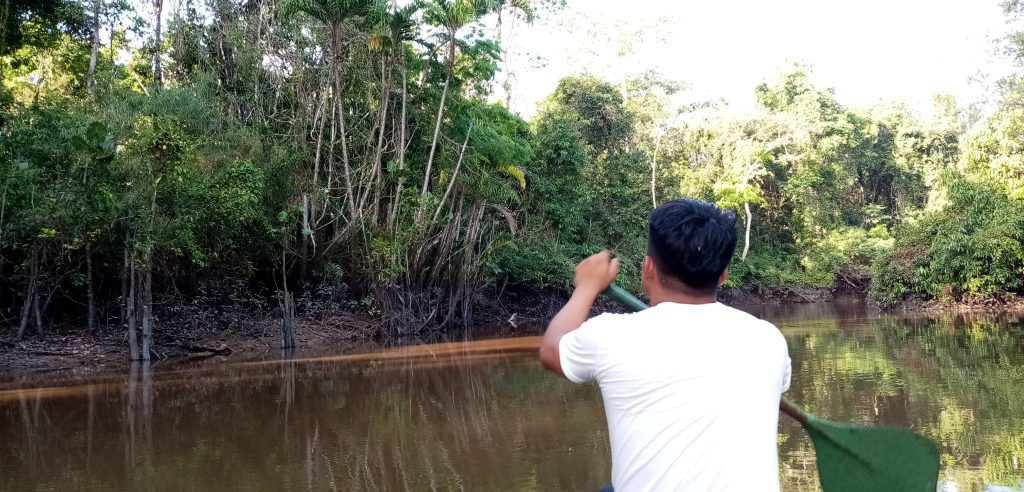
Simply Magical!
During our journey (where Miguel does all the rowing), Miguel provides me with information about the reserve. I’m lucky; we have the opportunity to see a whole group of howler monkeys that are eating. We usually hear them before we see them. A little later, it’s black-capped capuchin monkeys, and finally a group of white-faced capuchins that we encounter on our way. And I haven’t even mentioned all the different herons, which are beautiful to watch. First majestic, almost hidden, then taking off with elegance – a unique sight, all for me!
As we glide on the water, I also see turtles basking on a fallen branch in the water. Soon it will be the season for turtle nesting on the reserve’s beaches.
Before arriving at Gloria, I also saw an otter, waterfowl, several types of kingfishers, and a chameleon! Fortunately, Miguel is with me; he has eagle eyes and sees everything!
Arriving at Gloria
Upon our arrival, Miguel sets me up in my “room” and starts preparing our lunch. The kitchen is shared among all the guides (each takes care of their clients), but it’s not expandable. If there are too many different groups, it can take longer for your guide to cook your meal.
In the afternoon, we go for a walk. But first, we need to take the canoe to a place called Yanayacu, the blackwater. Indeed, the water changes color, and it feels very strange, even unsettling!
Jungle Walk
After about 30 minutes, we reach our destination. Along the way, we see a small anaconda – how cute! Miguel ties up the canoe, and we put on our rubber boots. We need them because we’re trudging through the mud. Here, we’re truly in the jungle, and the mosquitoes know it too.
During our walk, he explains to me the different trees and their use as medicine. Often, the locals would cut a few hundred grams of tree bark, let it soak in alcohol, and then use it as an ointment or take a small glass of it daily.
We return after 2 hours, just before it gets dark. I take a shower in the river before dinner. After that, everyone goes to bed at 8 p.m., once the generator has stopped.
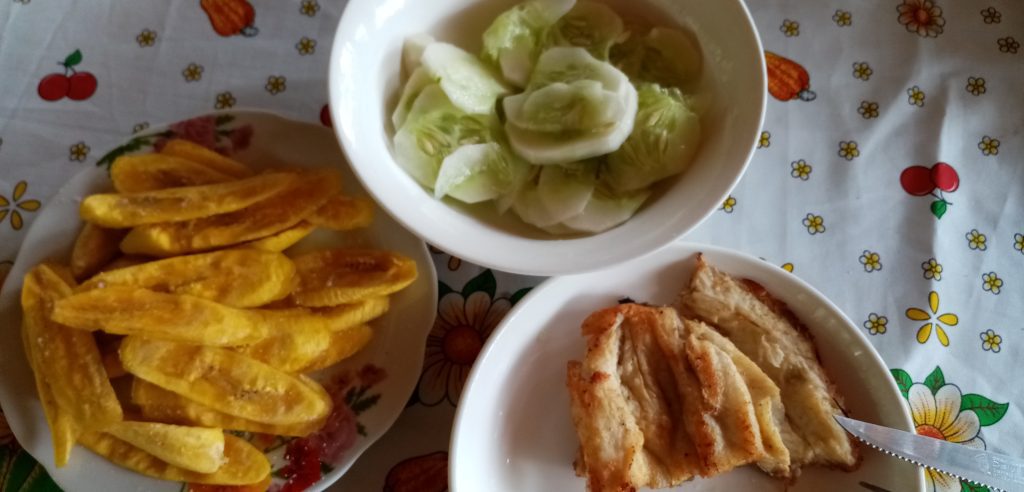
Note
It’s better to start early in the morning because from 9:30 to 10 a.m., the sun starts to get very strong. Always have sunscreen, a long-sleeved sweatshirt, a cap, and water with you. After several hours of canoeing in the sun, you will feel quite tired.
In fact, a good morning routine is to apply sunscreen and then insect repellent – and why not also insect repellent for your clothes. Reapply several times a day as needed.
Day 2 From Gloria to Pantheon
Early wake-up and breakfast before heading to the next stop. I take care of my morning routine: sunscreen and mosquito repellent. Miguel, on the other hand, takes care of breakfast. This morning it’s omelette and cooked tomatoes for breakfast, with a good cup of coffee (instant) and even some milk!
Once Miguel has rearranged our canoe and, most importantly, all our belongings, we set off again. It’s another beautiful day where I have the opportunity to see many animals, colorful birds, a sloth, and several species of turtles. The turtles come out to bask on tree trunks in the water. As soon as we approach, they disappear… We also spot gray dolphins, but it’s very difficult to see them entirely. We only see a gleaming back and that’s it.
During the journey, Miguel teaches me a lot about the Amazon, for example, that there are four different species of piranhas in the reserve.
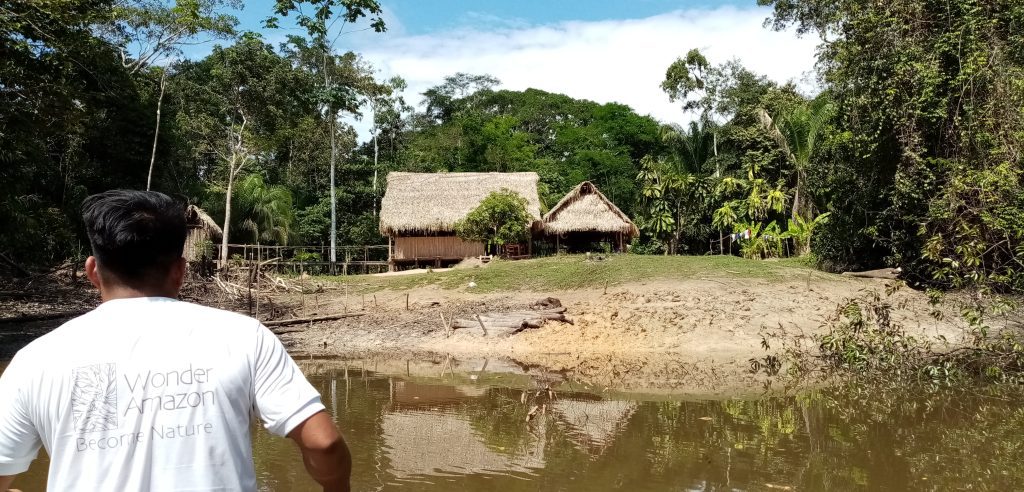
Arrival in Pantheon
Upon arriving in Pantheon, he explains to me that in the 1970s, there was a rubber boom, and many people came to settle in what is now the reserve. Pantheon was the cemetery at the time because it was not prone to flooding.
It’s very hot today, and I regret not having a sweatshirt nearby to better protect my arms.
We arrive in Pantheon late morning, and Miguel sets up all our things again. He puts a tablecloth on the table, takes out everything needed for cooking, glasses, cups, cutlery, and plates, a big bottle of water for me, coffee, biscuits, sugar, and salt. Organization in the cabins can only work by respecting each group’s belongings (and, of course, helping each other if necessary).
While Miguel sets up, I freshen up and apply another layer of sunscreen and mosquito repellent.
At the Pantheon site, there are two people who are part of the tourist associations of the reserve who take care of the place. This means being on-site, ensuring there is wood for cooking, filling the water reserves for the shower and toilets, and cutting the grass under the cabin.
After lunch (fish and fried plantains and cucumber salad), a huge storm breaks out. Water flows along the roof; it’s an incredible moment!
Fishing Activity
When the weather clears up, Miguel and I go fishing. First, we take the canoe back to a place called Restringida, which is not flood-prone (like Pantheon). We put on our boots again, and off we go for a 30-minute walk to Cocha Pantheon Lagoon. There are a lot of fish in the lake! They jump everywhere! Miguel gives me a demonstration, but unfortunately, the first fish escapes the hook, and we don’t have another one. It’s not a big deal; we start our way back, and Miguel explains even more about the trees and their medicinal virtues.
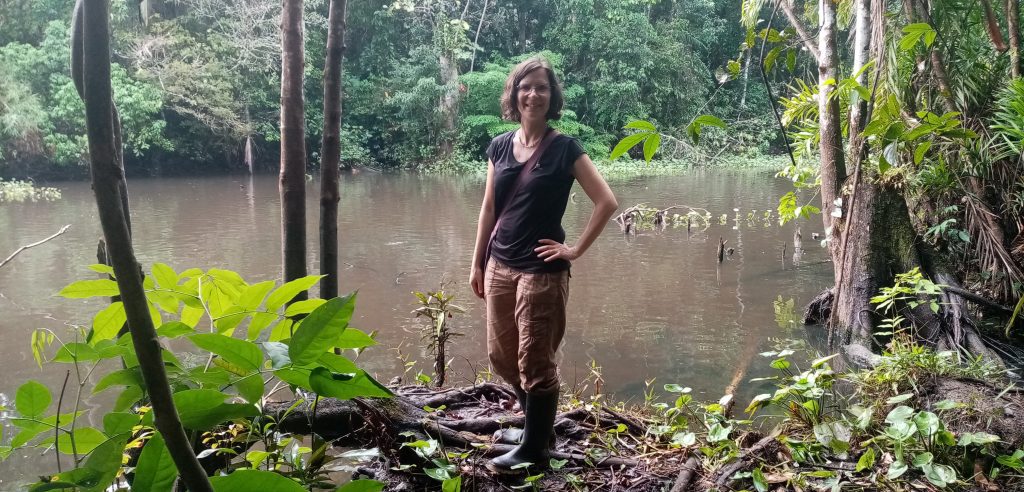
Night Outing
Last night, I was tired, but tonight we’re going on a night outing after dinner at 8 p.m. I’m lucky because the night is illuminated by the moon. Nevertheless, I’m uneasy. It’s quite scary to be in a canoe in the Amazon in the middle of the night. The atmosphere is mystical. The trees are outlined on the horizon. Miguel is perfectly equipped with a headlamp to show me the hidden animals in the trees.
Additionally, Miguel shows me how to spot crocodiles. By searching with the flashlight, we can see their eyes! It’s not more reassuring because I realize that we are surrounded by crocodiles. They’re not always large, but 2 meters is already quite something. We also see frogs and sleeping birds.
Miguel tells me Amazonian legends, which doesn’t help me feel better because they are about people who disappeared… Finally, I’m quite happy when we return to Pantheon.
This is a personal experience. I also tell you that the 8 and 14-year-old children from a French family I met in the reserve loved the night outing. It’s even their favorite outing!
Returning to the cabin, everyone is already asleep. I get ready and lie down in the tent that Miguel set up for me. It’s really nice; I’m protected from mosquitoes and have a bit more privacy.
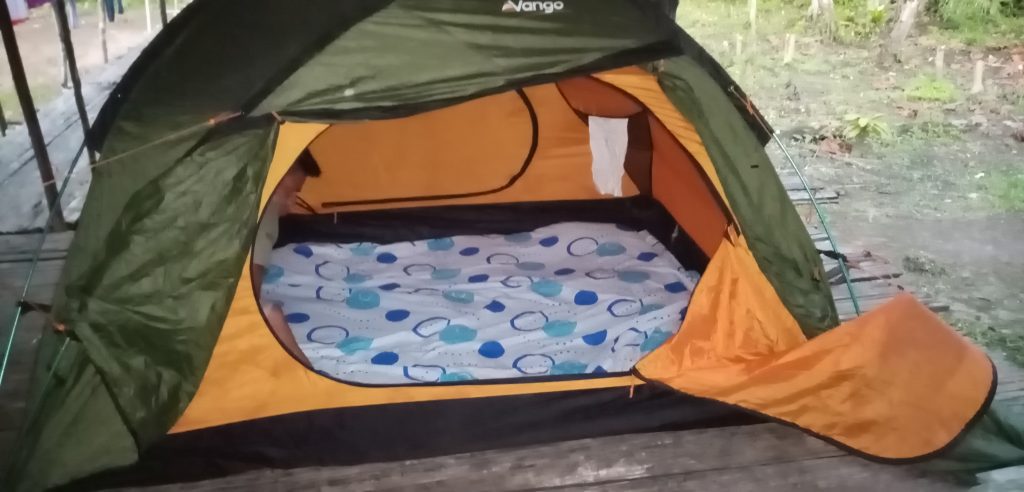
Day 3 – From Pantheon back to Gloria
Back to Gloria this morning. Given my experience yesterday, I’m better prepared today. I have a sweatshirt right next to me to change into as soon as the sun gets too strong.
During the journey, Miguel tells me Amazonian legends and about love perfumes that were regularly made at a certain time. We pass several canoes heading to Pantheon. There will be more people there tonight.
Once again, I have the opportunity to see several groups of monkeys in the trees, but also two sloths! We also see anacondas, but fortunately, they are rather small.
Miguel also explains to me the SERNAP program concerning turtles. There are actions to rescue turtle nests and eggs and then hatch them on “artificial” beaches to better monitor them.
Upon arriving in Gloria, there is a group of Russians on site. They are there for fishing. Their team consists of a bilingual guide and several local guides for cooking. There are also many other customers, young couples, and a solo traveler from Ireland. In total, there must be around 20 people tonight!
After Miguel has settled me in the same room as when I arrived, he prepares lunch. Once the sun is less strong, I go wash myself in the river – being careful not to get nibbled too much by the little fish.
Today, this afternoon is free. Miguel kindly offered me another fishing outing, but I was quite happy in the shade, talking with the other travelers.
Day 4 – From Gloria to Wonder Amazon
We leave early today, at 6:20 a.m., because it takes about 6 hours to return to the Wonder Amazon Lodge – it’s all against the current. We mainly want to avoid it getting too hot. Along the way, I see a large toucan and several monkeys.
The sun finally comes out around 10 a.m., and that’s when the magic happens. A group of at least 20 white-faced capuchin monkeys crosses the river. We see them arriving one by one on a large branch and jumping into the tree on the other side. Miguel has anchored the canoe, and we stay there watching the spectacle. I feel so privileged!
But that’s not all! A little later, while observing another group of monkeys in the trees, one of them falls! Just a few meters from us, the little monkey falls straight down – Miguel approaches to see. No worries, it gets up and jumps into the next tree.
Around 11 a.m., I put on long sleeves and cover my neck; the sun is strong, and it’s very hot.
We arrive at the Wonder Amazon Lodge around noon. Miguel is happy; he has beaten his own record!
Accommodations inside Pacaya Samiria
Within the reserve, there are several stopping stations for tourists and their guides. These are generally cabins with a roof, a wood-burning kitchen, and tables and chairs for eating. By walking on a small pontoon, you reach the toilet and shower area, each space closed with a curtain. The toilets do not have seats, and everyone brings their own toilet paper. The shower is a large container with river water and a carafe (a cut-up plastic bottle) to take water, wet yourself, and rinse.
In Gloria, there are several “rooms,” which are spaces separated by wooden planks with a curtain as a door. Each space has one or two beds with mattresses and a table. The guide takes care of making your bed (he brought the sheets) and installing the mosquito net.
In Pantheon, there are no separate rooms. You will either sleep on a mattress on the floor, protected by a mosquito net, or (depending on the tour operator you go with) if you want a bit more privacy, in a tent.
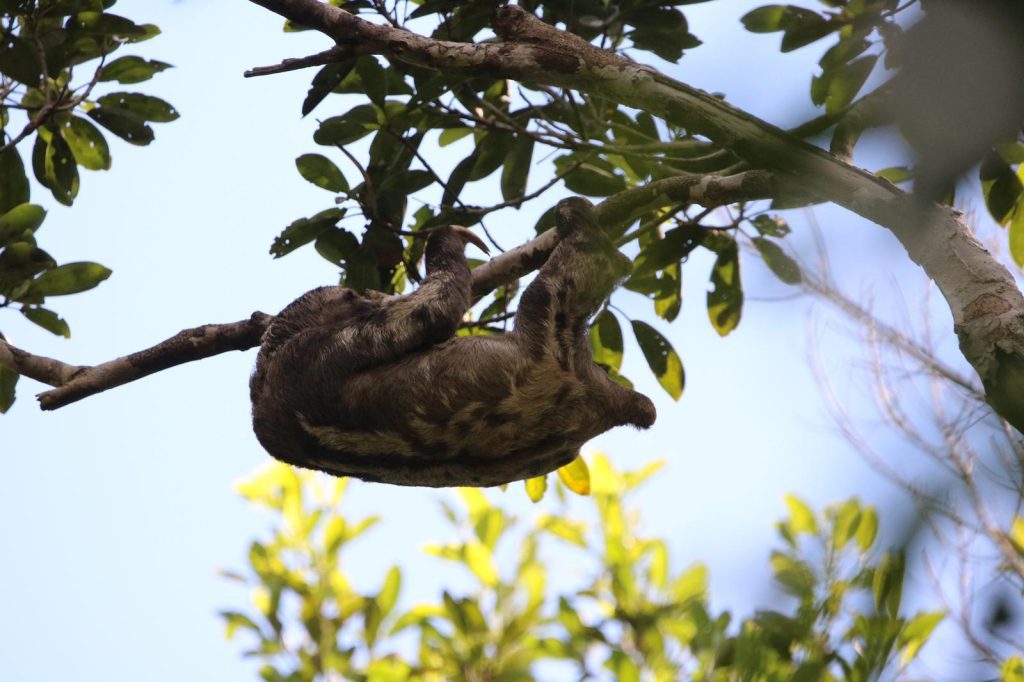
How to get to Pacaya Samiria Reserve?
To get to the Pacaya Samiria National Reserve from Lima, it’s quite straightforward:
- Flight to Tarapoto: Tarapoto is the closest city to the Pacaya Samiria Reserve and is usually the starting point for trips to the reserve.
- From Tarapoto to Yurimaguas: Once at the Tarapoto airport, take a taxi or private vehicle to the city of Yurimaguas, which is located about 130 kilometers away, approximately 2.5 to 3 hours by road.
- From Yurimaguas to Lagunas: Yurimaguas is the departure port for Lagunas, from where you would enter the Pacaya Samiria Reserve. I recommend inquiring in advance about the boat departure schedule. Often, boats leave early in the morning, and the journey takes about 4 hours.
- Once you arrive in Lagunas, your local tour operator will pick you up.
By traveling with Wonder Amazon, you have local expertise as well. Already during your booking and depending on your arrival time in Tarapoto, Jorge can inform you about the possibility of taking the Yurimaguas – Lagunas boat on the same day or if you need to spend a night in Yurimaguas.
Once you arrive in Yurimaguas, Jorge or his wife Lidia will be waiting for you. They will have already purchased your tickets for the boat to Lagunas and will welcome you with a small welcome arrangement to board the boat: a bottle of water, a fruit, savory biscuits, and chocolates to keep you satisfied until you arrive in Lagunas to eat.
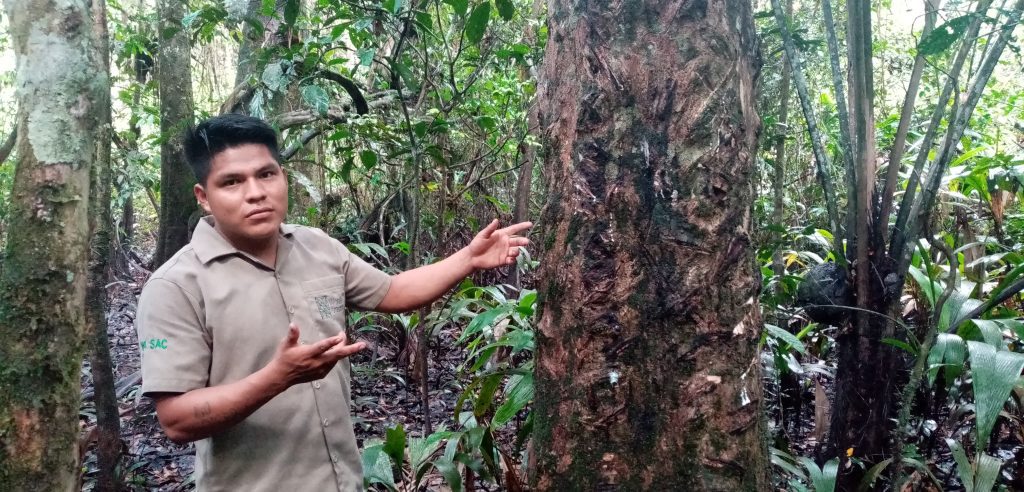
Which Place to Choose for Visiting the Peruvian Amazon : Pacaya Samiria via Yurimaguas, Iquitos, Puerto Maldonado?
This question often arises in Facebook groups: where is the best place? I don’t think there’s a one-size-fits-all answer to this question. It depends on you, your budget, your itinerary, etc.
If you’re already in the south and passing through Cusco, it makes sense to head to Puerto Maldonado by night bus or direct flight (once again possible after the pandemic) to visit the Amazon. There’s no need to go back to Lima to catch a flight to Iquitos or Tarapoto.
However, if you plan to explore the northern route of Peru, passing through the coast, Trujillo, Chiclayo, Cajamarca, Chachapoyas, and finally Moyobamba and Tarapoto, visiting Pacaya Samiria via Yurimaguas fits perfectly with your itinerary!
Health Tips for Visiting the Peruvian Amazon
Traveling in the Peruvian Amazon requires some health preparation, as the region can pose challenges in terms of tropical diseases and environmental conditions. Here are some general recommendations regarding medications and precautions to ensure your health during your stay:
- Insect Bite Prevention: Disease-carrying insects are common in the Amazon. Use insect repellents containing DEET, wear long and lightweight clothing to cover your skin, and plan to sleep under an insecticide-treated mosquito net.
- Hydration: The humidity and heat of the Amazon can lead to dehydration. Drink bottled or safely treated water to avoid stomach problems.
- Sun Protection: The Amazon region can be very sunny. Use broad-spectrum sunscreen to protect your skin from UV rays.
- Travel Insurance: Make sure you have travel insurance that covers medical care and emergency evacuations if needed.
Vaccines and Medications
- Consult a Healthcare Professional: Before traveling to the Peruvian Amazon, it’s strongly recommended to consult a doctor specializing in tropical diseases or a travel medicine doctor. They can provide you with specific advice based on your health condition, medical history, and the duration of your stay.
- Vaccinations: Ensure that you are up to date on your basic vaccinations, such as tetanus, diphtheria, and polio. For the Amazon region, vaccinations against yellow fever, hepatitis A and B, typhoid, and rabies are recommended.
- Antimalarials: Malaria is present in some parts of the Peruvian Amazon. Consult a healthcare professional to determine if you need antimalarial medication before and during your trip.
- Basic Medications: Carry a first-aid kit with basic medications such as pain relievers, antihistamines, stomachache remedies, anti-diarrheal medications, and anti-nausea medications.
Each traveler has individual needs, and it’s strongly recommended to consult a healthcare professional before traveling to the Peruvian Amazon to get personalized medical advice based on your situation.


